(noon. – promoted by ek hornbeck)
Apologies for the tardiness of this diary. A couple weeks ago, as my husband and I were driving, a huge deer jumped right in front of our car. We were absolutely fine, aside from a little shock and damage to the car itself. So I’ve been taking care of all that fun bureaucratic stuff that goes along with filing a claim.
I was lamenting to my mother how this was impeding the progress of my Ostara diary when she pointed out that hitting that deer has everything to do with Wicca. And she’s right. The stag, or horned god, is a major figure in Wicca. He courts and mates with the Goddess in spring, is sacrificed in the fall, and reborn in the winter.
“Yes, but the stag is supposed to be sacrificed in fall, not spring!” I told her. ” And not even at Ostara, at Beltaine!”
“Well, this stag was just a little confused,” she said.
Indeed.
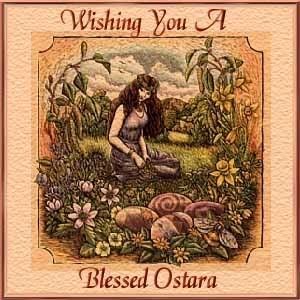
Anyway, on to Ostara. Interestingly, one definition of Easter is
original name of pagan vernal festival almost coincident in date with paschal festival of the church; Eastre, dawn goddess.
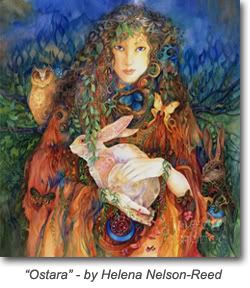
The Germanic Goddess Ostara, also known as Eostre, Oestre or Eastre, is Goddess of Spring, and the Goddess for whom this sabbat is named. The word “Eastre” is derived from the word “east” – meaning the direction (Interestingly enough, the word “estrogen” comes from the same root word). This then associates the Goddess Ostara with the dawn as well. Another theory is that Eostre came from the Germanic word “austron”, meaning dawn, which itself is derived from the word “aus”, which means “to shine”. This then connects Ostara to the Indo-European Goddess Hausos, who was among other things is a Goddess of dawn. This connects her also to the Roman dawn Godess Aurora, and the Greek dawn Goddess Eos.
Why all this etymological talk? Well, because the existence of a Goddess Ostara is suspect, and to some, even the idea that any ancient Northern European peoples celebrated the vernal equinox is suspect. There’s also the fact that I kind of have a thing for word origins.
In Wicca, East is the direction of the element of Air, which represents mental powers. Therefore Ostara is a good time to work on improving your powers of intuition and your psychic abilities. As Goddess of the dawn, Ostara offers us new beginnings, so now is an excellent time to begin new projects (or start to finish old ones).
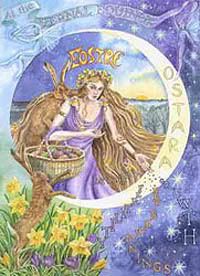
Ostara, both Goddess and festival, were attested to by a monk named Bede in his writings in the 8th century. Some claim that the testimony of Bede is not enough to establish the existence of Ostara, and suggest that Bede might have invented her. This does not seem very likely to me, for the same reasons it did not seem very likely to Jacob Grimm: Why would a man of the church invent a Pagan Goddess? In fact, place names suggest that Ostara was honored in both Germany and Denmark. But whether she was worshiped as a Goddess or not seems rather inconsequential to me. She is worshiped today, by many Wiccans and Pagans, and her day is the vernal equinox.
About Ostara, Jacob Grimm said:
Ostara, Eástre seems therefore to have been the divinity of the radiant dawn, of upspringing light, a spectacle that brings joy and blessing, whose meaning could be easily adapted by the resurrection-day of the christian’s God. Bonfires were lighted at Easter and according to popular belief of long standing, the moment the sun rises on Easter Sunday morning, he gives three joyful leaps, he dances for joy […]. Water drawn on the Easter morning is, like that at Christmas, holy and healing […]; here also heathen notions seems to have grafted themselves on great christian festivals. Maidens clothed in white, who at Easter, at the season of returning spring, show themselves in clefts of the rock and on mountains, are suggestive of the ancient goddess…
The Easter bonfires were a long-standing German tradition, attested to since 1559. Other countries continue the bonfire tradition today, and believe it or not, the German-descended residents of Fredricksburg, Texas still light bonfires on the tops of nearby hills on Holy Saturday. Often the bonfires were lit at dawn, bringing to mind the practice of some modern-day churches of holding “sunrise services” on Easter morn.
At this time of fertility and reawakening of the earth, the egg is seen as a potent symbol. Clay eggs, painted with red and green stripes, were found in a Germanic cemetery among a child’s burial goods. They are estimated to be as old as 320 C.E. Today, egg decorating is still a fine art in Germany. The slang term for a male’s testicles in Germany is still “eir”, meaning “egg”. Among the Ostara rituals that still persist in Germany is the practice of throwing an egg high into the air over a field “to ensure that the grain would grow as high”. Similarly, eggs are also thrown over fields in Sweden to ensure bounty.

There is a rumor in the Pagan community – just a rumor, mind you, but an interesting one. Supposedly when Christianity was brought to Old Europe, the villagers could no longer safely carry out their traditions, such as exchanging decorated eggs as gifts to bring blessings of fertility. So instead they hid the eggs for the children to find. However, the Christians suspected the villages, and therefore bribed the children with money, or threatened them. The child would then uncover the hidden egg, and the owner of the property the egg was found on could be punished.
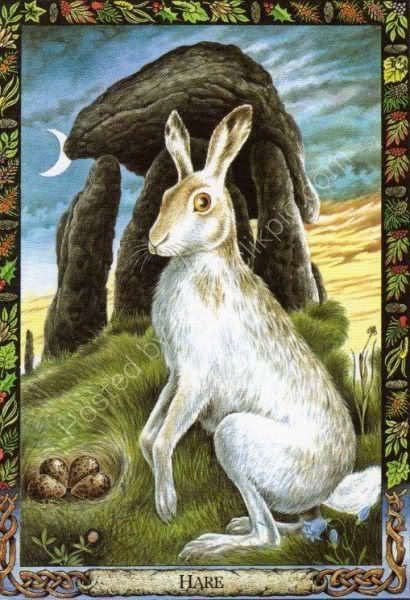
The Goddess Ostara is associated with eggs as well as the hare, (also a potent symbol of fertility, as the females can conceive a second litter of offspring while still pregnant with the first), a correlation that is a bit harder to trace. According to late 19th century scholar Charles Isaac Elton, a folk custom in Leicestershire, England, where
the profits of the land called Harecrop Leys were applied to providing a meal which was thrown on the ground at the “Hare-pie Bank,”
was likely connected with the worship of the Goddess Eostre.
Another late 19th century scholar named Charles J. Bilson concluded:
whether there was a goddess named Eostre, or not, and whatever connection the may have had with the ritual of Saxon or British worship, there are good grounds for believing that the sacredness of this animal reaches back into an age still more remote, where it is probably a very important part of the great Spring Festival of the prehistoric inhabitants of this island.

Then of course there is the issue of the “Three Hares” a motif dating back to 6th century China. It is also present on 13th century Mongol metalwork, a copper coin found in Iran dated back to 128, churches in France and Germany, as well as thirty medieval churches in Devon, England. Just where the motif originated and what it means is uncertain, though it is assumed that it represents fertility and the lunar cycle. Amazingly, this symbol often appears beside the green man, a pagan representation of the God, in many Christian churches. The use of the rabbit motif in Christian architecture is especially strange when remembering that most Christian art sees the rabbit as a representation of lust.

Scholars have speculated that perhaps the Goddess Ostara was a German version of the Norse Goddess Freya, whose symbol was not the hare, but the cat. Indeed it is said that her carriage is drawn by two enormous cats. Hares and cats are both seen as the familiars of witches, and they have been substituted for each other before, such as when the Vietnamese adopted the Chinese Lunar calendar and changed the rabbit to a cat, as there were no rabbits in Vietnam.
Asian culture is very fond of rabbits, particularly of the notion that they live on the moon. The Chinsese Goddess Chang’e is said to live on the moon, where she ended up after an overdose of a pill of immortality caused her to float away, with rabbits who continually pound the elixir of life for her. In Japenese and Korean folklore, the rabbits are pounding “mochi”, or mashed sticky rice.
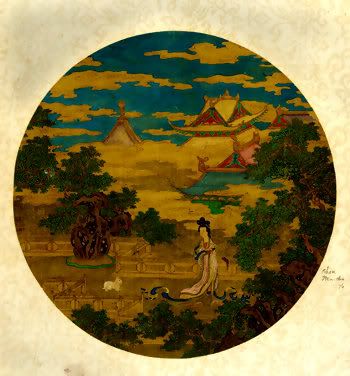
As for the confusion about the rabbit bringing the eggs, European folklore did refer to “Hare’s eggs”, which is likely a confusion rooted in the fact that hares, unlike rabbits, do not raise their young in an underground burrow, but use a hollow called a “form”. The nests of lapwing birds look very much like hare forms. Also, plovers often build their nests near hare forms, and are known to abandon their nests for a time to chase predators away from their eggs. Therefore, people would often see empty plover nests with hares nearby, and eggs in the lapwing nests that the people mistook for hare forms, and draw the conclusion that hares just might lay eggs.

Rabbits are not so well-regarded on the Isle of Portland in Dorset, England, where the rabbit is considered unlucky and even speaking its name can upset older residents. This dislike possibly began during the early times in the quarrying industry, where the extracted stone that was not fit for sale was built into walls behind the working quarry face, which rabbits, being natural burrowers, burrowed under, thus weakening the walls, sometimes causing severe injuries.
To avoid the bad luck brought on by speaking the rabbit’s name, substitute words such as “long ears” and “underground mutton” are spoken, and is it said that a public house can be quickly cleared of people simply by someone saying the word “rabbit”, though not everyone believes the superstition nowadays.
In a peculiar twist, this symbol of both fertility and innocence is the origin of the urine pregnancy test. The test was based on the idea that a rabbit would die if injected with a pregnant woman’s urine, which is untrue. In the 1920s it was discovered that if the urine contained the hCG hormone (found in the bodies of pregnant women), the rabbit would display ovarian changes. The rabbit would then be killed and its ovaries inspected, but the death of the rabbit was not the indicator of the results. later, technicians learned how to inspect the ovaries without killing the animal. A similar test involves injecting Xenopus frogs to make them lay eggs.
The Anglo-Saxon peoples gave the Goddess Ostara her own month, Eostremonath, which was April. I find this a bit odd since we celebrate Ostara in March, which the Germanic peoples called “Rhedmonath” or “Hreth-monath, after the Goddesses Rheda or Hreth, about whom not much is known, as her existence is also attested to solely by Bede, and whose worship apparently died out early. Some Germanic dialogues still call April Eostremonath.
English and German are the only languages where Christians call their most holy day by the name of a Pagan festival. The name of the Christian Easter is based on the Hebrew word “pasah” (as in Passover) in other European languages. Although, there are some Christian Reconstructionsist who call Easter “Resurrection Sunday” so as to avoid any pagan connotations. It doesn’t seem to be catching on.
Yet perhaps it does not matter whether Ostara was ever actually ceelbrated by the ancient inhabitants of Germany. The vernal eqiunox has been celebrated in Egypt since at least 2700 B.C., Called Sham El Nessim,
The spring festival coincided with the vernal equinox and the ancients imagined that that day represented the beginning of creation. The date of Sham El Nessim was not fixed. Rather, it was announced every year on the night before the feast at the foot of the Great Pyramid. The feast of Shemu, means ‘renewal of life’ which was later corrupted during the Coptic age to ‘shamm’ (smelling or breathing) and the word ‘nessim’ (breeze) was added. The ancient Egyptians first celebrated the feast of Shamo in 2700 BC, towards the end of the 3rd Dynasty.
Today Sham El Nessim is celebrated as a national, not religious, holiday, and is celebrated by both Christians and Muslims, though the date has been changed to”Easter Monday”. Among the festivities planned for this day are picknicking – popular places being at the zoo or on the Nile, whilst enjoying foods including lettuce, scallions, lupini beand and of course, boiled colored eggs.
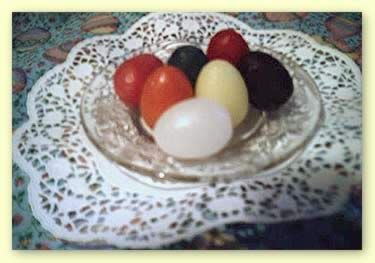
The middle east offers quite an array of equinox celebrations in fact, among them the Iranian festival of Nowruz, which commemorates the ascension of the mythological king of Persia with festivities that last two weeks. The day is also commemorated by Azerbaijan, Afghanistan, India, Turkey, Zanzibar, Albania, the Kurds, and various countries in central Asia. It is also a Zorostrian holiday, and is therefore celebrated by the those of the Baha’i’ faith and the Nizari Ismalili Muslims.
More bizarrely, my neighbors to the south in Annapolis, Maryland apparently celebrate the vernal equinox as the “Burning of the Socks” festival, in which boatyard employees and sailboat owners burn their socks (which are only needed in the winter months) in celebration of the warmer weather that will mean more customers and work. Socks are not to be worn again until the Autumn equinox in September.

Another rather odd Ostara custom involves the tilt of the earth and an egg. Supposedly, if you take a raw egg outside just moments before the exact time of the equinox, you can balance the egg upright (wider end down) by just setting it on the ground. Try to find a decently level place like the sidewalk or driveway. If you want, I suppose you could do it inside on a table, but the article didn’t mention whether that worked or not, so you may want to play it safe and do it outdoors.
Interestingly, Ostara is the name of the mother-archetype identified by Carl Jung. I find this rather strange as Ostara is a festival centered around honoring the maiden form of the Goddess. There also happens to be an asteroid named “Ostara 343”, that was discovered in (where else?) Germany in 1892 by a man named Max Wolf. Because his last name just had to be a strong pagan symbol. Just had to be.
As for what we witches and other various assorted pagans do to commemorate this holiday that we might have just made up? You could adorn your altar like the one below, with offerings of spring flowers, hard boiled eggs and feathers (symbols of air). Another popular idea is this: during the week before the equinox, make a list of all those whom you have wronged in the past year, and spend the week trying to make it up to them. Then, on Ostara, take your list and burn it, thereby physically and psychically wiping clean your karmic state for the next year.

Just when to celebrate Ostara is a matter of debate as well. Some recommend that it is best to celebrate it during the new moon, as a waxing moon is associated with the maiden goddess, and therefore spring. My mother says that Ostara must be celebrated at dawn on the day of the equinox. The full moon following the equinox is also a very powerful day. In general, Wiccan holidays are acceptably celebrated within three days of the holiday itself. This is also true for esbats (celebrations of the full moon, held monthly), which can be celebrated the day of, before, or after the full moon. Of course, Samhain (Halloween) is best celebrated after dark on October the 31st, because that is the time the veil is thinnest; likewise for Beltaine (Mayday) on which day the fairy folk are more easily found. So perhaps my mother is right.
I will leave you tonight with a peak into a Wiccan Ostara ritual. This is the ritual performed by my mother and another member of her coven. (I know a coven is usually thought of as more than that, but it’s rather hard to get that many people together sometimes, especially at dawn.)
Time: Dawn on the vernal Equinox.
Preparation:
The Altar has a yellow altar cloth. The aspect candle is yellow and in front of it is a small icon of the Wheel of Life.
Outside the circle the area of the temple is well lit by candles or torches.
In the centre of the Circle is a small cauldron with a token fire ready to be lit
The circle is cast in the manner for a normal Esbat. When the circle is whole the keeping of the lesser Sabbat of Ostara is declared as well as any other workings.
The High Priestess then stands in the West, and the High Priest in the East, both carrying wands with the cauldron between them, in the middle of the circle on the floor .
High Priestess: (Standing on the Western Side of the Cauldron) (Facing East/HP)
We kindle this fire today
In the presence of the Holy Ones,
Without malice, without jealousy, without envy,
Without fear of aught beneath the Sun
But the High Gods.
Thee we invoke, O Light of Life;
Be thou a bright flame before us,
Be thou a guiding star above us,
Be thou a smooth path beneath us;
Kindle thou within our hearts
A flame of love for our neighbours,
To out foes, to our friends, to our kindred all,
To all men on the broad earth;
O merciful Son of Cerridwen,
From the lowliest thing that liveth,
To the Name which is highest of all.
The High Priestess then draws invoking pentagram to the East before the High priest, who is standing in the East, facing The High Priestess, and then hands the High Priestess’s Wand to him.
The Maiden lights the candle from the presence lamp and hands it to the High Priest, who lights the cauldron or bonfire.
Leaving Cauldron, Susan and everyone else go around the circle deosil ( to the left) and then when reaching the Western point cross to the east jumping over the fire in the cauldron.
Any other workings are carried out after this.
Cakes and wine shall follow and then the closing of the circle. Have a meal after with a spring and egg theme. Usually this is an egg spring breakfast.
I hope you enjoyed learning some new things about Ostara, Easter, and rabbits on the moon. I will leave you now with the strangest bit of information that I have found this early spring season: the knowledge that this, an Easter Monkey, actually exists.

Nowhere in my research did I find any connection between monkeys and Ostara. But apparently now there is one.

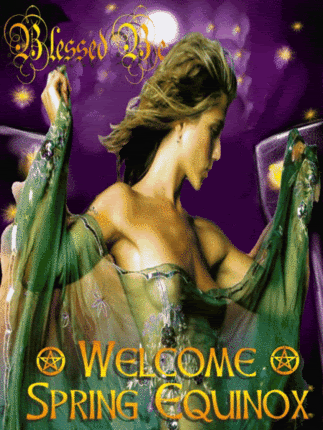
13 comments
Skip to comment form
We Irish trad types celebrate the date because it’s when Brighid finally wins the battle that began at Imbolc and defeats the Cailleach (the personification of Winter) and begins her reign over the warm half of the year. Though to give the Hag credit, she fought till the bitter end this year; we just had an overnight freeze last week, and we’re in the middle of Zone 7!
I don’t know who these “scholars” are whom you reference, but it would seem that Yngve-Freyr has a wicked sense of humor and He dearly loves His twin Sister. I would gently urge you to do a bit more research on the Vanir before you confuse Freyja with Oestre.
I actually could more easily see a conflation of Oestre with Sunna as there is a link with Eos/Aurora. The fertility aspect is certainly there too but the Vanic twins were traditionally celebrated separately on Walpurgis, which the Celts call Bealtaine, the first of May.
Britt-Mari Nasstrom, in her work “Freyja, The Great Goddess of the North” is vilified by Asatru purists for trying to conflate Freyja with many other deities both within and without the given pantheon. Nasstrom’s references to similarities in the Egyptian, Greco/Roman, Babylonian and most especially the Vedic/Hindu pantheons get on many Asatruar nerves, but I take her work seriously because it is based on archaeological research which takes into account the centuries-long and continent-wide migrations of the Indo-European people. However, even in HER book there is not one mention of any link between Oestre/Ostara/Aurora/Eos and Freyja. This is also the first place I am ever seeing a confusion between rabbits and cats. So despite the obvious hard work you put into this posting and the many interesting places it goes, I am sadly forced to respond to the parts which pertain to my path with a general “Dudette, WTF?!?”
I am all for Wiccans researching the other paths of magic which call to them, and eclectics will do what works for them, and indeed the Earth has grown so small that insisting upon heritage over the callings of the Gods is pointless. A tradition that is incapable of recognizing the migration and linguistic evolution of it’s people over the millenia is a religion that will never grow.
That said, some Wiccans and eclectics occasionally have a tendency to believe the first thing they read and leap to conclusions and workings done in the spirit of more reconstructionist traditions with more enthusiasm than respect. The results often end up like… well… your leaping stag.
I practiced Wicca quite seriously and earnestly for 12 years beginning in 1980 before converting to Asatru in 1992; and quite frankly I have only heard of the Vernal Equinox being celebrated as Ostara by Wiccans over the past TWO years.
The Aesir and Vanir are very active and the tradition is very much alive. They whom Wiccans still call the Lord and the Lady are forgiving of ignorance if there is sincerity and respect, but They WILL respond most quickly and earnestly to any slights.
I am sorry but these things had to be said, and I am sorry your car got messed up by a stag. Remind me never to piss off Yngve-Freyr, yow!
Eir is a Goddess and one of the nine handmaidens of Freyja. Her provenance is healing and Her name is very likely linked to Eire, or Ireland; anyone who has ever been there will understand why the Norse would see that beautiful place as one of healing and know why they founded cities there.
The plural of eggs in German is “Eier”, not “Eir”.